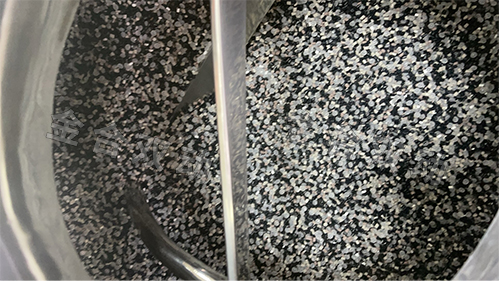How to Achieve Uniform Mixing of Colored Plastic Particles Using JINHE Double Motion® Mixer?
1. Core Mixing Principles
Synergistic Dual Motion:
Drum Revolution: Drives bulk material turnover for macro-distribution (large-scale dispersion of particles with different colors).
Blade Rotation: Generates intense shear forces to break particle agglomerations, ensuring micro-uniformity (precise fusion at color interfaces).
Key Factors for Color Uniformity:
Density Compensation: Adjust rotation speeds to balance density differences (e.g., ABS vs. color masterbatch).
Electrostatic Control: Add antistatic agents or regulate humidity to prevent stratification caused by static adhesion of lightweight particles.
2. Process Parameter Optimization
3. Special Case Handling
High-Contrast Colors (e.g., Black & White):
Stepped Speed Increase: Preheat at low speed (10 rpm, 1 min) before ramping to working speed.
Add dispersants (e.g., white oil) to reduce interfacial tension.
Transparent Resin + Masterbatch:
Strictly control temperature (≤80°C) to prevent resin yellowing.
Use mirror-polished blades to minimize friction heat.
4. Quality Verification Methods
Sampling:
Extract 3-5 samples from different mixer zones using a multi-point sampler.
Evaluate with a color difference meter (ΔE < 1.5) or visual cards (ASTM D6290).
Production Validation:
Inspect injection-molded test pieces for flow marks/color spots.
Build a process database by recording batch-specific mixing parameters.
5. Troubleshooting Common Issues
Issue: Color Streaks
Solution: Inspect blade wear (replace if gap >3 mm).
Issue: Masterbatch Agglomeration
Solution: Switch to pre-mixing mode (dry blend masterbatch + carrier resin for 30 sec first).
By precisely aligning mechanical motion with material properties, Double Motion® mixers achieve ±2% batch color consistency, outperforming standard mixers (±5%). For optimal results, integrate with an MES system to log mixing curves and refine processes continuously.
